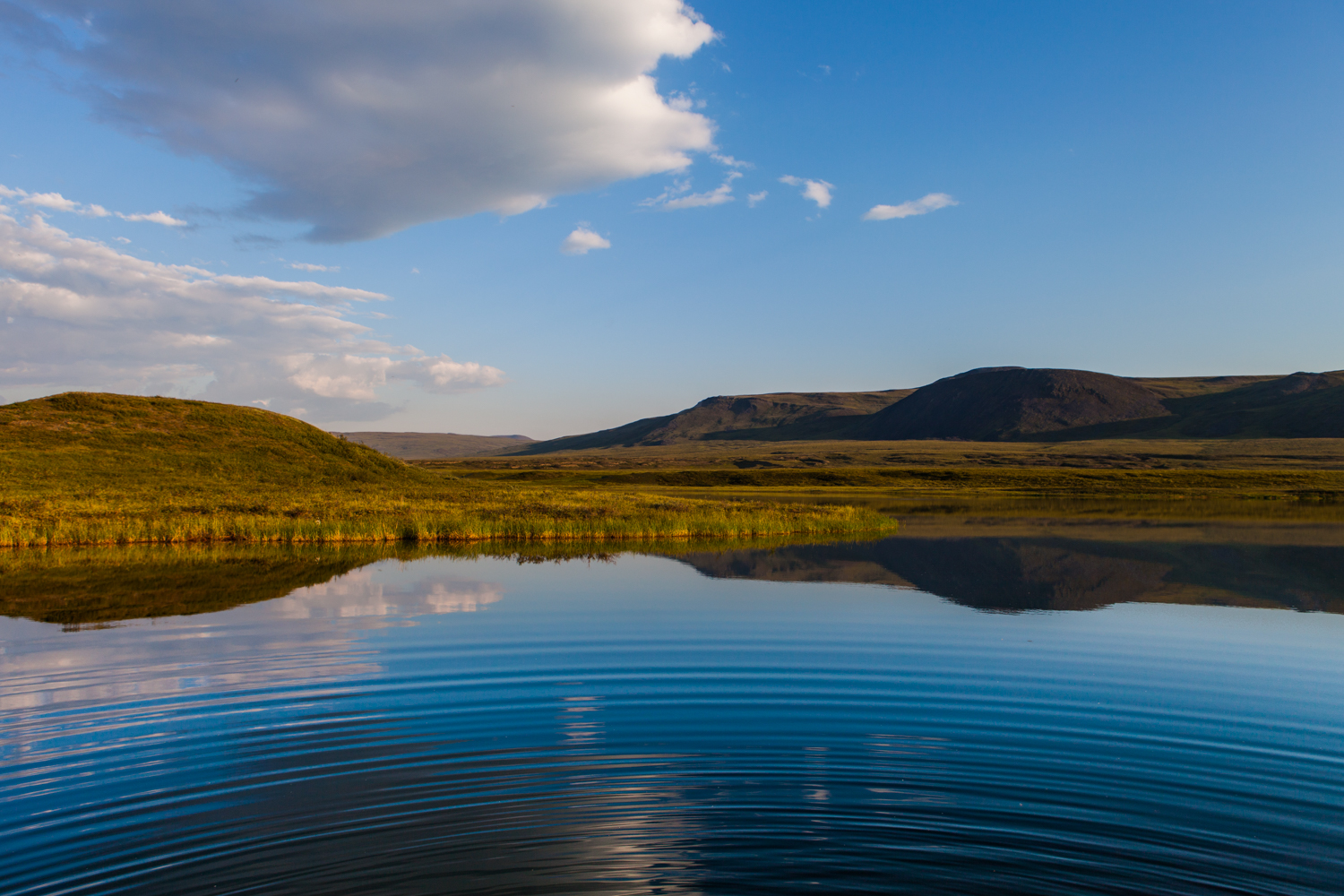The fieldwork season for archeologists working in the Western Arctic National Parklands is short, spanning from July to September, those few precious months of never-ending days when the snow cover relents and the surface of the permafrost melts into a tangle of bogs and rivers and lakes. Though the arctic is technically a desert it's a tough fact to remember during an arctic summer when travel overland is in many ways tougher than in winter. Each landscape in this series is of an important archeological site, from premodern villages to summer encampments where the artifacts date back well as much as 10 to 14 thousand years. At first glance, the traces of human habitation are subtle, like fireweed growing from the stone foundations that used to hold skin tents along the shores of lakes tucked up into passes in the Brooks Range. And then suddenly you'll come upon a line of cairns running the length of an entire ridgeline or piles of stone tools that look like their makers have just gotten up and gone away for a moment to check a fire or talk to a friend--when in fact they have been sitting there untouched for thousands of years.
















